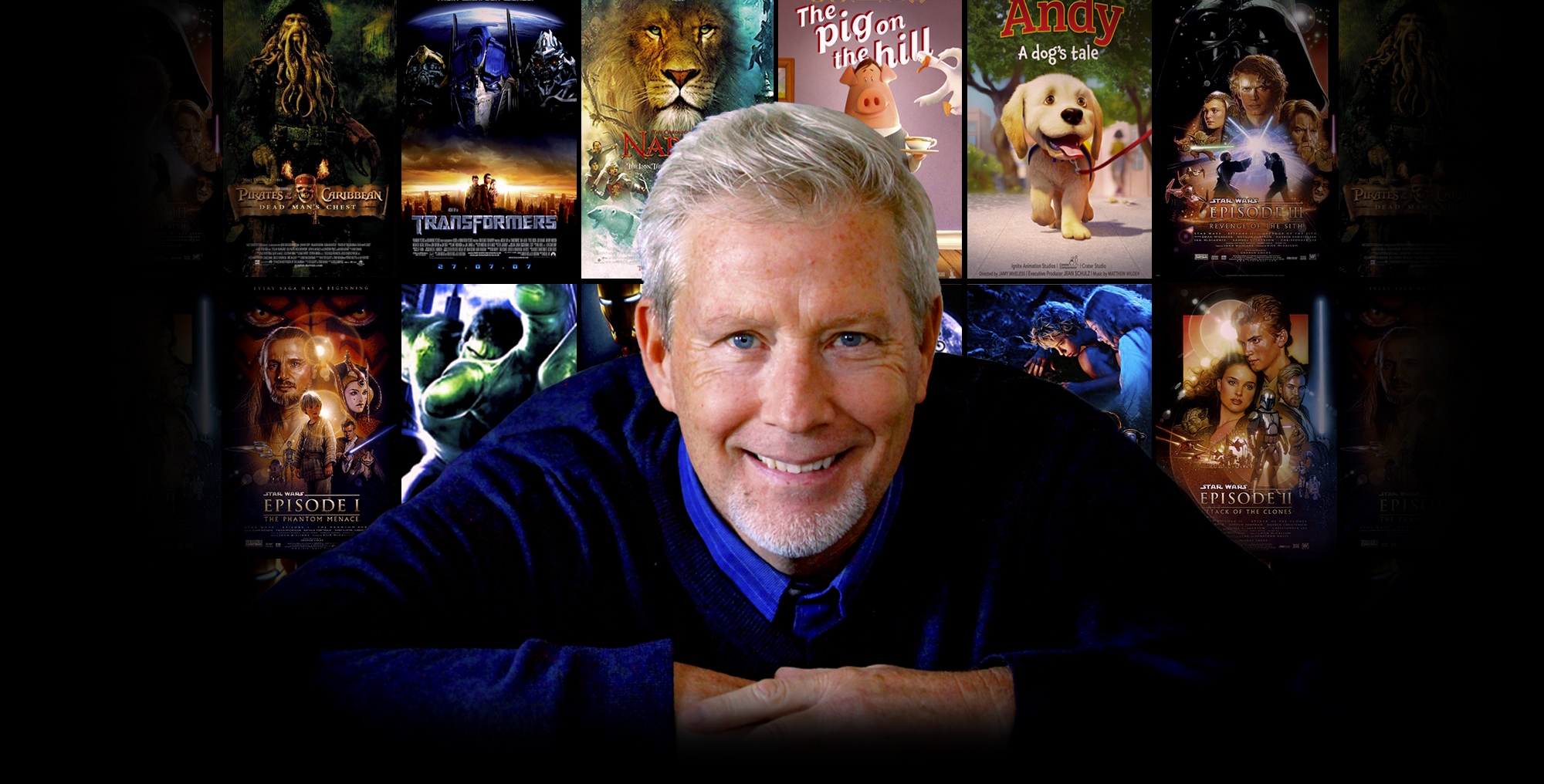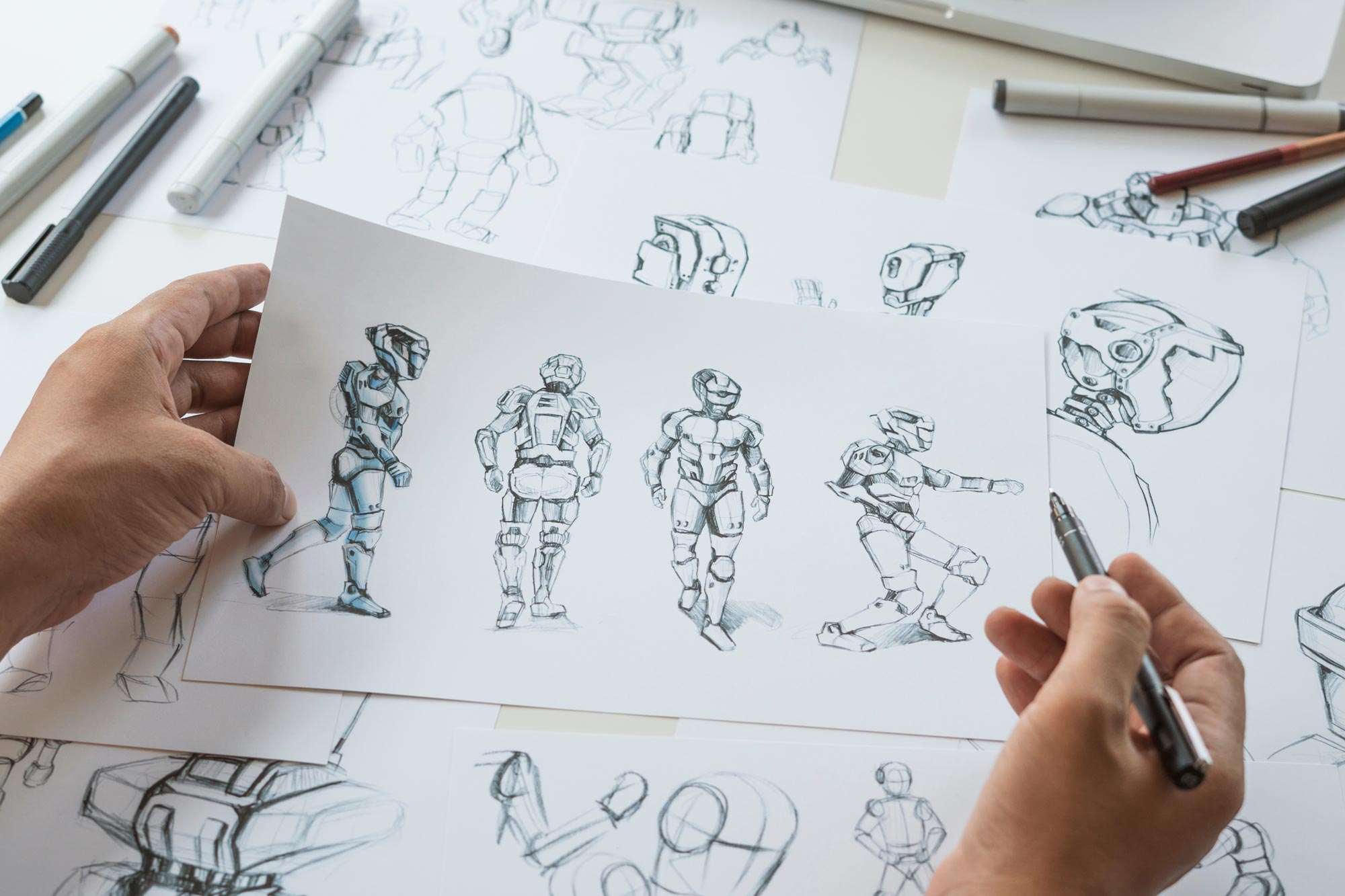Auburn Animated


amy Wheless ’87 has a vision. He’s the man who brought Yoda, Davy Jones and The Incredible Hulk to life onscreen. He’s animated fantasy worlds from Neverland to Narnia and moved audiences with E.T. and Autobots alike.
His next project? Making Auburn University the animation school of the southeast.
Animation courses are currently available to students enrolled in Auburn’s two studio art degree programs in the College of Liberal Arts. This year, the department introduced the animation minor. As animation gains steam, through the efforts of the Animation Advisory Council, the College of Liberal Arts and dedicated students, Wheless hopes to grow animation education at Auburn until the transition from classroom to career is seamless.
Beyond Wheless’ own wheelhouse—3D character animation for film—he’s recruiting students from across the institution who want to work in the entertainment industry, from marketing to virtual reality to engineering. In five years, Wheless believes the collaboration could result in Academy Award-level projects.
“This is the grassroots. We’re starting something exciting,” Wheless said. “I get inspired every time I look at this program and where we’re going. It’s beginning to grow and I’m so thrilled because in this industry, we’re looking for talent all the time. Coming back to Auburn, I realized there’s a gap that we can absolutely fill. We don’t have to be in Hollywood to build out a pipeline or a program. We can build it on campus and prepare our students to go out there in the world and get a great job, a dream job.”
To that point, Wheless brought Hollywood to Auburn, starting with the animation speaker series this spring. Wheless, co-founder of Lightstream Animation Studios and CEO of IGNITE Animation Studios, called on friends from his time at Industrial Light & Magic to speak to Auburn students.
The first was Iain McCaig, the visionary behind Darth Maul in the “Star Wars” franchise. He spoke to more than 150 Auburn students about the importance of character design in storytelling.
“I learned that the secret of life is contrast,” McCaig said. “If everything is all the same wonderfulness, it’s not wonderful at all. And that’s why life is so interesting. It’s that treasure of the differences between us that makes me excited. People are my favorite fantasy creatures.”

His advice to students was to hang on to childhood loves and heroes, as animators take them into every project. The skill of an entertainer, McCaig said, is not just being good at what they do, but speaking the truth of things they love, see and experience.
“There’s truth in the saying that when you get something far above your skill level, you aspire to it,” McCaig said. “Get to know your friends, reach out and form a community. They’re not only just there as friends, but they’re also there as teachers. Everybody, teacher-level or student-level, has something special. You have something you do better than anybody and you have insights into the world that nobody else will have because you’re you.”
Students in attendance pointed out that many of their childhood loves and heroes were animated by McCaig himself.
The next speaker Wheless called was Shawn Kelly, animation supervisor at Industrial Light & Magic, known for his work on dozens of blockbuster films, who spoke to students about animating characters and storytelling.
Kelly is an acclaimed animator who has worked on franchises such as “The Avengers,” “Transformers,” “Teenage Mutant Ninja Turtles” and more. But his animation story started like many others, in a movie theater as a child, watching “Star Wars.”
“I didn’t know that I wanted to be an animator yet, I just knew that all I wanted to do was be the guy that makes Hoth,” Kelly said. “So, I started to veer toward that and really made every decision based on, does this take me one step closer to Star Wars? The best thing about having that in my head was it forced me into situations that I never, ever would’ve put myself in. It made me talk to people I would’ve been afraid to talk to.”
To share what he learned, Kelly co-founded Animation Mentor, an online animation school that connects students with industry professionals.
“You’re never going to know everything about animation. That’s impossible. We’re all climbing this mountain. It’s not a race, and no one’s ever going to get to the top of that mountain,” Kelly said. “Don’t be afraid to fail, especially when you’re in school. Fail boldly. Don’t be afraid to just try things, bomb, learn from it, then do a little bit better.”
This spring’s speaker series ended with the man who’s taught countless students the technical expertise, precision and artistry it takes to bring characters to life. Wayne Gilbert, head of character animation at the Vancouver Institute of Media Arts, explained the importance of planning in animation.
“The life of your story is in the strength of your poses. The life of your animation is how the character gets from one pose through the next,” Gilbert said. “You must have a vision. What do you want the audience to know? If you can answer that before you start, you can tell your story. Aesthetically, you’re telling a story.”
Gilbert’s portfolio includes several feature films, short films, advertisements and video games. He is known for his animation work on the 20th anniversary edition of “E.T. the Extra-Terrestrial,” “Star Wars: Episode II” and “The Mummy Returns,” projects he worked on while at Industrial Light & Magic. As animation director for EA Black Box, Gilbert focused on the “Skate” and “Skate 2” video games. In addition to being the head of character animation at VanArts, Gilbert also serves as a mentor for Animation Mentor.


“You have to watch everything and see how it applies to your lives. See these moments, make note of them, find out when you can use them,” Gilbert said. “Even a character getting hit in the head and falling down, there’s so many ways I can do that. That’s aesthetic. It’s what you want to animate. Technically, it’s how you’re going to do it.”
Joel Gush, senior in fine arts focusing on animation with a minor in computer science, said between McCaig’s energy, Kelly’s encouragement and Gilbert’s teaching, the series was a once-in-a-lifetime opportunity for Auburn students.
“Those were all really beneficial because the first two really showed that you can make it into the industry, it’s possible that you can get there, it just takes hard work, passion and dedication to what you’re doing,” Gush said. “And it was a fresh take on things, very informative, that synthesized what we’ve been learning in the classroom.”
Beyond the classroom, Gush has been one of the students driving Auburn Animation’s growth. Gush co-founded, with Rosa Waite and Laine Patterson, the Entertainment Industry Community, a student organization founded in spring 2022 that brings together students across disciplines.
From animation and graphic design to computer science and software engineering, Gush said the organization seeks to build a community that reflects the entertainment industry.
“Originally, it was just going to be an animation club, but I think we realized it needed to be bigger than that and so our goal is to build community and bridge gaps between any discipline that pertains to the entertainment industry,” Gush said. “The whole point is to build a community, create connections, create opportunities for networking, have speakers, events like we’ve had already. And just allow people to get a taste of what it’s like being in the industry.”
In fall 2022, the Department of Art & Art History introduced a minor in animation. The minor is designed to equip students with a foundation of animation skills, shaped by the combined research and industry expertise of Assistant Professor Sara Gevurtz and Jamy Wheless. The upper-level courses in the minor include projects students can use to build a portfolio or reel. Coursework includes drawing, digital art, 2-and-3D animation and a thematic animation course.
“The Department of Art & Art History has designed the animation program to serve students who want to pursue animation in a fine arts context or work in industry,” said Chair Joyce de Vries. “There are so many opportunities in the field—one can work on animation for artworks, movies and television shows, but also for music videos, TV commercials, building/construction models, medical illustration or blockbuster events like the recent immersive experiences in Atlanta and across the country that make van Gogh’s and Picasso’s artworks come alive.”
For those seeking to be motion picture or television animators, the animation speaker series connected them with legends whose art first inspired them. For Wheless, the turnout for the series showed Auburn’s hunger for more animation education–an eagerness he hopes to align with the industry’s demand for animators.
And de Vries said as the animation program grows at Auburn, students will be able to point to the speaker series as a formative moment in their arts education.
“Iain McCaig regaled us with stories about his career as a concept artist and granted us a glimpse of his incredible imagination and energy. Shawn Kelly told us about how he achieved his dreams to be an animator and offered tips to students on how to build animation skills and prepare a reel. Wayne Gilbert focused more on some key lessons to make animated characters convey personality and story content,” de Vries said. “All stressed the fun they have had following their dreams, working hard in the animation industry. Their talks were great for our art and animation students, as they spoke about pursuing their passion and creativity in one’s career and gave students advice on how to succeed in the business.”